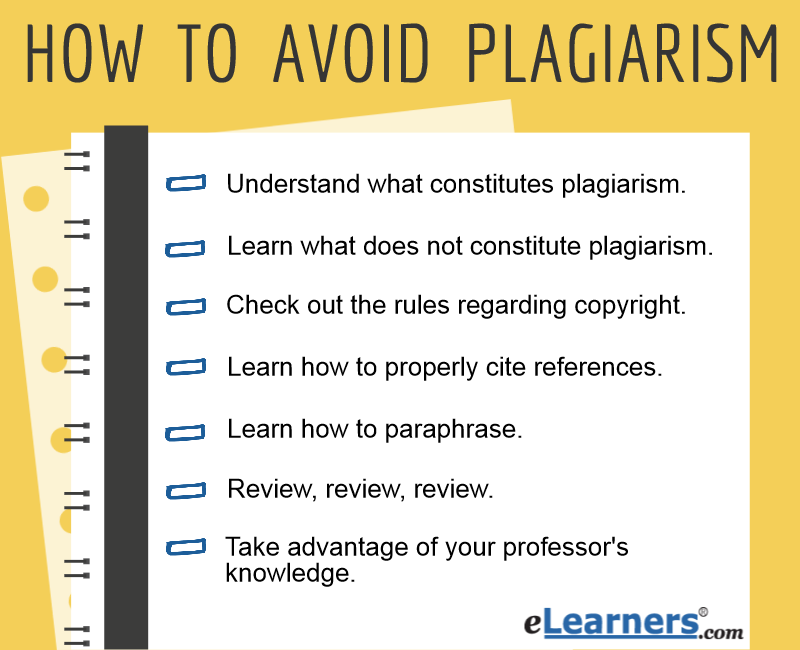
Aramide Ayodele
Finding all the information and resources you need to help with your work can be difficult, and in an era of having content readily available on the internet can make averting plagiarism almost impossible. However, copying someone’s work can be equated to stealing, even when done unintentionally. Plagiarism is considered a very serious offence and has so many repercussions, be it legally, academically, or even monetary. But not to worry, here are some of the best methods to help you avoid plagiarism.
 |
| Source:ecampusnews.com |
1. Know and understand the meaning of plagiarism.
According to the Cambridge Advance Learner’s Dictionary and Thesaurus, plagiarism is “the process or practice of using another person’s ideas or work and pretend it is your own”. Having a strong understanding about plagiarism and its consequences helps to create a non-plagiarized work.
2. Cite correctly.
Citing is one thing, but not having it properly done is another thing. Taking information from one source and mentioning another can lead to plagiarism. So, you should know the standards of what you’re writing for and make sure you cite your sources correctly.
READ ALSO: Managing your social media footprint
3. Proofread.
It would not take much time for you to go over your work again to mark out errors and ensure you cite your sources correctly.
 |
| Source:thoughtco.com |
4. Quote and Paraphrase.
Giving credit is very important, and a way to give credit is with the use of quotations. If you’re taking outside information word for word into your work, then quotations should be used, so as not to be accused of plagiarism. You can also paraphrase by rewording the sentences without it losing meaning.
READ ALSO: Staff, students welfare our utmost priority – Dean SPGS
5. Include a reference page
You can always include a reference page, at the end of your work, to easily avoid plagiarism. As you look for more information, you add your sources to the list on your reference page.
6. Add value.
Adding value in your work is also a good way to avoid plagiarism. You can add value by putting some of your insights into your work. You don’t need to be using all the information you find in your sources. Extensive research can give you a lot of ideas till it clicks.
7. Use a plagiarism checker.
There are many plagiarism checker tools online like “Turnitin”, “DupliChecker”, “Copyleaks”, and so on. These are tools that help you scan through your work and detect any form of plagiarism.





More Stories
Corruption in Nigeria: a systemic issue
Chasing Fairness in an Unfair System
What Do the Best University Students Do?